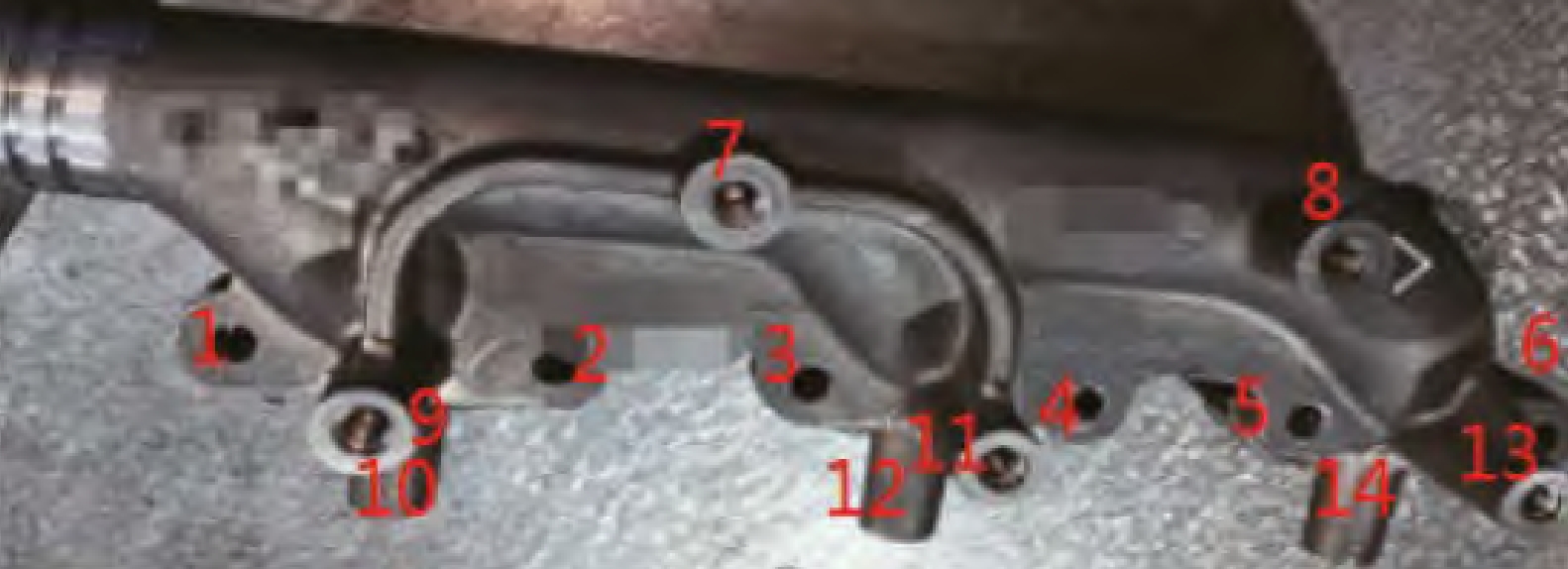1. Introduction
The production of silicon-molybdenum heat-resistant ductile iron exhaust manifolds in our company has faced challenges in eliminating shrinkage defects. The unique properties of the material and the complex design of the manifolds have contributed to this issue.

1.1 Background
Our company manufactures a variety of casting materials for different automotive and industrial applications. The silicon-molybdenum heat-resistant ductile iron exhaust manifold is a key product. However, the casting process has been plagued by shrinkage problems, especially in the bolt areas, which are isolated hot spots.
1.2 Problem Statement
The shrinkage in the bolt regions of the exhaust manifold castings has been difficult to control, affecting the quality and performance of the final product.
2. Defect Analysis
2.1 Casting Defect Description
The shrinkage occurs in multiple locations around the bolt holes, including the side and bottom of the bolt holes. The microstructure analysis reveals the presence of micro-shrinkage, which can lead to reduced mechanical properties and potential leakage issues.
| Shrinkage Location | Description |
|---|---|
| Bolt Inner Thread Side | Micro-shrinkage observed on the side of the bolt inner thread. |
| Bolt Hole Bottom Root | Shrinkage at the root of the bolt hole bottom. |
| Bolt Hole Bottom Side | Larger shrinkage on the side of the bolt hole bottom. |
2.2 Causes of Shrinkage
- Material Properties: The high silicon content in the silicon-molybdenum ductile iron leads to poor fluidity and a tendency for paste-like solidification, making it difficult to achieve proper feeding.
- Design Factors: The presence of multiple isolated bolts creates hot spots that are challenging to feed during the solidification process.
3. Improvement Measures
3.1 Process Improvement Schemes
Five different process improvement schemes were designed and tested to address the shrinkage problem.
| Scheme Number | Improvement Measure |
|---|---|
| Scheme 1 | Adding cold needles to the bolts. |
| Scheme 2 | Inserting a bottom sand core inside the bolt. |
| Scheme 3 | Placing cold iron at the corresponding position of the inner core bolt and on the bolt top surface. |
| Scheme 4 | Adding a riser on the side of the bolt. |
| Scheme 5 | Optimizing the gating system to a center pouring system with a single riser. |
3.2 Results and Comparisons
The effectiveness of each scheme was evaluated by analyzing the presence and extent of shrinkage in the castings.
| Scheme Number | Shrinkage Elimination Effect | Other Observations |
|---|---|---|
| Scheme 1 | Unsuccessful, shrinkage still present in the lower part of the bolt. | – |
| Scheme 2 | Ineffective, shrinkage occurred at the bolt root. | – |
| Scheme 3 | Bolt upper part had air entrapment and internal shrinkage. | – |
| Scheme 4 | 60% of the processed parts had shrinkage after riser neck cleaning. | Process yield reduced, cleaning difficult. |
| Scheme 5 | Successful, no shrinkage in the bolt areas. | High process yield, good quality. |
4. Production Validation
4.1 Batch Processing Results
After implementing Scheme 5, a batch of 2,265 bolts were processed, and none of them exhibited shrinkage. The overall product yield reached 97.66%.
4.2 Application in Similar Products
The optimized process has been applied to five other similar products, and all have shown no shrinkage defects after casting.
5. Conclusion
5.1 Summary of Results
The use of the balanced solidification technique in Scheme 5, along with the proper placement of the riser and utilization of hot spots, has effectively eliminated shrinkage in the silicon-molybdenum ductile iron exhaust manifold castings.
5.2 Significance and Future Outlook
This solution not only improves the quality of the exhaust manifolds but also provides a valuable reference for the casting industry in dealing with similar casting defects. Future research could focus on further optimizing the process and exploring other potential applications of the balanced solidification technique.
